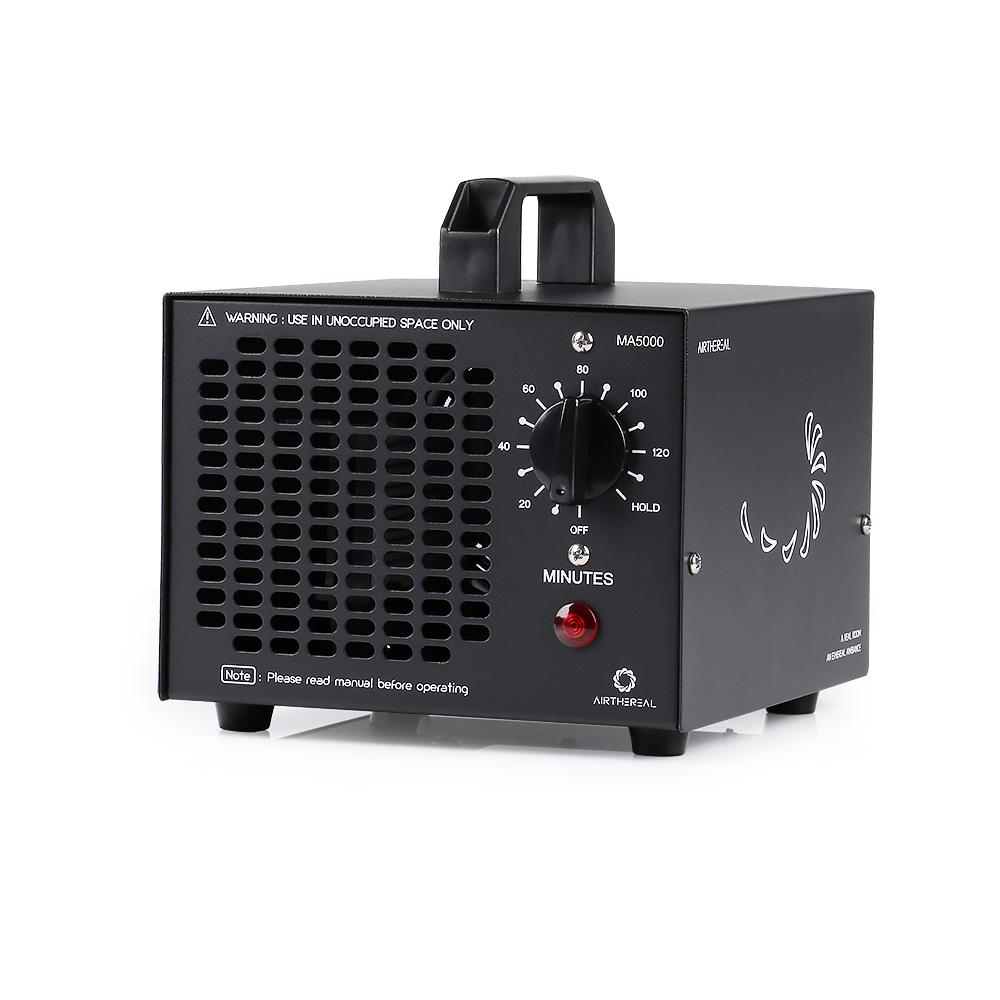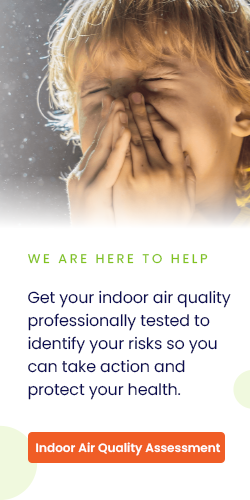Ozone generators and ionizers that produce ozone as a byproduct have been touted as a way to increase indoor air quality and decrease air contaminants like formaldehyde. The research says otherwise. Ozone formaldehyde is a threat to your health: consider this your cease and desist warning letter.

The Hidden Dangers of Ozone Machines
Formaldehyde is a common chemical found in everyday objects: clothing, carpet, glue, fragrances, and the world around us. But don’t mistake commonality for safety. This chemical is also a known carcinogen (i.e. a substance that causes cancer) and can irritate the eyes, skin, and lungs and worsen asthma-like symptoms.
Safe formaldehyde exposure limits have been set by the National Institute for Occupational Safety and Health (NIOSH) at 16 parts per billion (ppb).
It’s no secret that formaldehyde is harmful to our health, which is why many people have searched for solutions to reduce their exposure. Ozone machines and ionizing machines that produce ozone have been marketed as air cleaners, even going as far as to say that ozone is “energized oxygen” or “pure air.”
But studies have shown that ozone can actually increase formaldehyde and other contaminants in the air. In the early 1990s, Charles Weschler proved this by conducting an experiment with carpet in an enclosed chamber. He found that even though ozone decreased some of the VOCs in the carpet, the VOCs within the chamber itself increased.
Ozone machines work by creating chemical reactions with air contaminants to eliminate them rather than trap them. And they work, to a degree. The ozone reaction can take months or years for many chemicals found in indoor air. And what isn’t as commonly known is that these reactions can produce harmful byproducts that worsen the quality, particularly where formaldehyde is concerned.
But Ozone Machines Endorsed by the EPA, Right?
Many brands of ozone machines have an EPA establishment number printed directly on the package but don’t consider this an endorsement from the agency.
These numbers are used by the EPA to identify the facility where the machine was produced. However, because it’s related to the EPA, many consumers assume it’s a direct endorsement and therefore trustworthy.
The truth is, the EPA does not certify air cleaning devices, nor do they recommend air cleaning devices or manufacturers. If you see an EPA “stamp of approval” on an ozone machine or air cleaning device, consider it a dishonest attempt to make a sale. You may want to steer clear of it altogether.
A Safer, More Effective Solution for Improving Indoor Air
Ozone formaldehyde can compromise your health, and ozone-producing machines will only make it worse. If left unchecked, unhealthy amounts of formaldehyde and other VOCs in your air could lead to lung damage, membranous nephropathy, and liver toxicity.
The safer, more effective solution for improving indoor air is to use a HEPA filter that traps pollutants instead of making a chemical reaction with them. HEPA filters are the only air cleaners that meet EPA standards of efficacy, even though they’re not directly endorsed by the EPA itself.
Is your home under an ozone warning? Get your indoor quality professionally tested to expose your risks so you can take action and protect your health.






